And so we begin.
Here we focus on human relationships as they actually unfold face to face, how we learn to relate and how technology can help or hinder human interaction. Here a journey begins on a path towards a new technology to foster human understanding, not abstractly but immediately in our face-to-face interactions, perhaps even for you, dear reader, if you choose to follow our journey. We’re not there yet, but much has already been done, enough to affirm that what has been my lifelong work as a psychologist is not only possible, but I believe necessary to address the crushing problems of our time, how people treat each other.
Here the recurring themes of this journey are: face-to-face interaction,  human relationships, learning, and technology.
human relationships, learning, and technology.
As Kipling said, “in the land of the blind, the one-eyed man is king.” But we are all blind when it comes to face-to-face interaction, and there are no experts here. Each of us, you and I, are the best authority of our own experience. And when we can share our experience, especially our face-to-face experience with each other, we are no longer blind, but see together what cannot be seen alone. The dialogue that emerges between us moves us both forward. So… join in as you are able.
Why start with face-to-face interaction?
Because there is no other behavior more central to human life than face-to-face interaction.
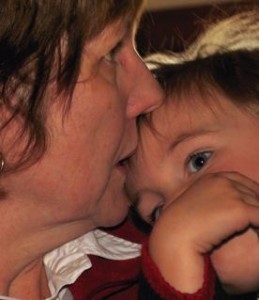 Probably the only thing we do more than interact face-to-face is breathe. Like breathing, we take it for granted, until something goes wrong. The anthropologist, Edmund Carpenter wrote: “I don’t know who discovered water, but I’m sure it wasn’t a fish.” Fact is, our living environments are invisible because they are all-encompassing. Our face-to-face interactions are ever-present, even when we’re not physically face-to-face, because we always define and understand ourselves in relation to others, in our relationship histories and our relational images. It seems that it cannot be otherwise. At the same time, it is hard to talk about this without getting overwhelmed, abstract, and vague to the point of trivializing what is most central to human life, the capacity to connect with others beyond our selves.
Probably the only thing we do more than interact face-to-face is breathe. Like breathing, we take it for granted, until something goes wrong. The anthropologist, Edmund Carpenter wrote: “I don’t know who discovered water, but I’m sure it wasn’t a fish.” Fact is, our living environments are invisible because they are all-encompassing. Our face-to-face interactions are ever-present, even when we’re not physically face-to-face, because we always define and understand ourselves in relation to others, in our relationship histories and our relational images. It seems that it cannot be otherwise. At the same time, it is hard to talk about this without getting overwhelmed, abstract, and vague to the point of trivializing what is most central to human life, the capacity to connect with others beyond our selves.
So, how about starting with definitions?
Face-to-face Interaction is defined here as
any interaction between two or more human beings
who are physically close enough to each other
so as to permit some form of mutual perceptual contact
and reciprocal behavioral exchange.
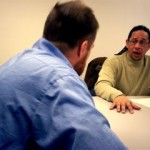
This definition covers a lot of ground and suggests that a major distinction in human relationships is whether the interactions are mediated or immediate. This distinction is based on whether or not there is anything (or any person) in between the parties who are interacting. The Latin word media means “in the middle of ,” and “immediate” means literally “not mediated.” Mediated human interactions use media such as written/printed words, radio, television, the internet, and these media are distinct from the people interacting.
Immediacy
The first thing to understand about face-to-face interactions is that they are not mediated, i.e. nothing stands in between the participants. They can see, hear, touch, smell, and even taste each other directly without the aid of any tools (media) whatsoever. The immediacy of face-to-face interaction includes more than time. They are also spatially immediate. When individuals are in the same place at the same time, each becomes a perceptual object unto the other, and each becomes a recipient of the other’s behavior, and each bears the consequences of their perceptions and behaviors immediately. This absence of anything in between the participants, then, is the distinguishing feature of face-to-face interactions. It makes all the difference for participants and for anyone outside the interaction trying to understand what’s going on. When you’re face to face, you’re close enough to get hit and close enough to be hugged. Consequences are immediate!
Speed
In microseconds! That’s how fast things happen in face-to-face interactions. And they happen at many levels: mentally, emotionally, percpetually, behaviorally, neurologically, biochemically, spiritually.
The Problem(s): Dynamic Duality = Tension and Conflict:
In the School of Hard Knocks face-to-face interaction reigns supreme. Relationships, as they unfold face-to-face, are inherently conflictual because each participant must deal with someone different than oneself. Private cognitions become overt behaviors when each participant not only observes but also is observed. Being face-to-face means perceptions become realities, which affect overt behaviors so that misperceptions can become misbehaviors. Expectations can lead to self-fulfilling prophecies. Flashbacks of past interactions can alter one’s current perception. As central as face-to-face interactions are to human life, they are very complex and, therefore, resistant to scientific study. Yet, they form the core of human relationships, and as such, lie at the heart of how we understand healthy and destructive relationships and how we can apply empirical science to human conflict.
Connecting: Healthy Relationships
One theory about human relationships is Relational Cultural Theory, which emerged from the work of Jean Baker Miller who proposed a new understanding of women’s development and other psychologists collaborating with her at Wellesley College, near Boston, Massachusetts. Relational Cultural Theory (RCT) postulates that all human growth occurs in connection and to be human is to yearn for connection. Relationships foster growth when they are based on mutual-empathy and mutual empowerment. A growth-fostering relationship, according to Jean Baker Miller, is characterized by five good things:
Zest: an increased sense of vitality, aliveness.
Empowerment: an increased ability to take action
Clarity:
Self-worth
Desire for relationships beyond the growth-fostering relationship.
Tags: The Journey // Add Comment »
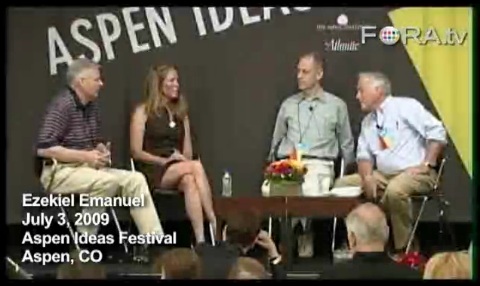

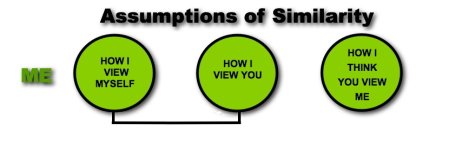
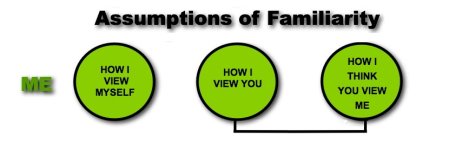


 “
“


 human relationships, learning, and technology.
human relationships, learning, and technology. Probably the only thing we do more than interact face-to-face is breathe. Like breathing, we take it for granted, until something goes wrong. The anthropologist, Edmund Carpenter wrote: “I don’t know who discovered water, but I’m sure it wasn’t a fish.” Fact is, our living environments are invisible because they are all-encompassing. Our face-to-face interactions are ever-present, even when we’re not physically face-to-face, because we always define and understand ourselves in relation to others, in our relationship histories and our relational images. It seems that it cannot be otherwise. At the same time, it is hard to talk about this without getting overwhelmed, abstract, and vague to the point of trivializing what is most central to human life, the capacity to connect with others beyond our selves.
Probably the only thing we do more than interact face-to-face is breathe. Like breathing, we take it for granted, until something goes wrong. The anthropologist, Edmund Carpenter wrote: “I don’t know who discovered water, but I’m sure it wasn’t a fish.” Fact is, our living environments are invisible because they are all-encompassing. Our face-to-face interactions are ever-present, even when we’re not physically face-to-face, because we always define and understand ourselves in relation to others, in our relationship histories and our relational images. It seems that it cannot be otherwise. At the same time, it is hard to talk about this without getting overwhelmed, abstract, and vague to the point of trivializing what is most central to human life, the capacity to connect with others beyond our selves.